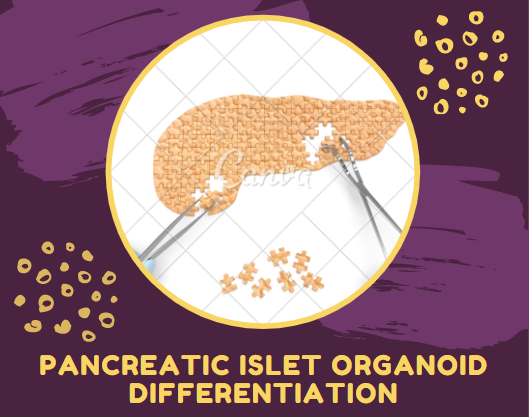Microenvironments for Self-Assembly of Islet Organoids from Stem Cell Differentiation
Decellularized tissue-specific extracellular matrix and microenvironments for pancreatic islet organoid differentiation
Type 1 diabetes results from autoimmune destruction of β-cells, leading to incapable of maintaining normoglycemia in these patients. Although type 2 diabetes is caused by the peripheral resistance to insulin and impaired insulin secretion, the late stages of this disease can induce a significant decrease in β-cell mass. Therefore, both type 1 and type 2 diabetic patients could benefit from β-cell replacement therapy. Islet transplantation has proven to be a cure to diabetes. Nevertheless, this treatment is unavailable to vast majority of patients due to the scarcity of human donors and transplant rejection. Thus, new sources of transplantable islets need to be identified.
This invention describes an innovative technology enabling the biofabrication of human islets from various cell sources including human pluripotent stem cells (HPSCs). A novel nondenaturing method of preparing decellularized tissue-specific extracellular matrix in combination with new growth factors induces self-assembly of pancreatic islet during differentiation of human pluripotent stem cells. The characterization of the organoids revealed that the organoids consisted of all major endocrine cell types, including α, β, δ, and pancreatic polypeptide cells that were assembled into a tissue architecture similar to that of human islets. These organoids are capable of secreting insulin and glucagon in response to glucose.

- Tissue matrix substrates prepared by a detergent-free method.
- Organoids contain all major endocrine cell types, including α, β, δ, and pancreatic polypeptide cells.
- These organoids are capable of secreting insulin and glucagon in response to glucose.
- The HPSCs derived islets can be used directly for drug screening/validation as well as for diabetes pathophysiological studies.
U.S. 10,767,164
Patent Information:
| App Type |
Country |
Serial No. |
Patent No. |
Patent Status |
File Date |
Issued Date |
Expire Date |
|